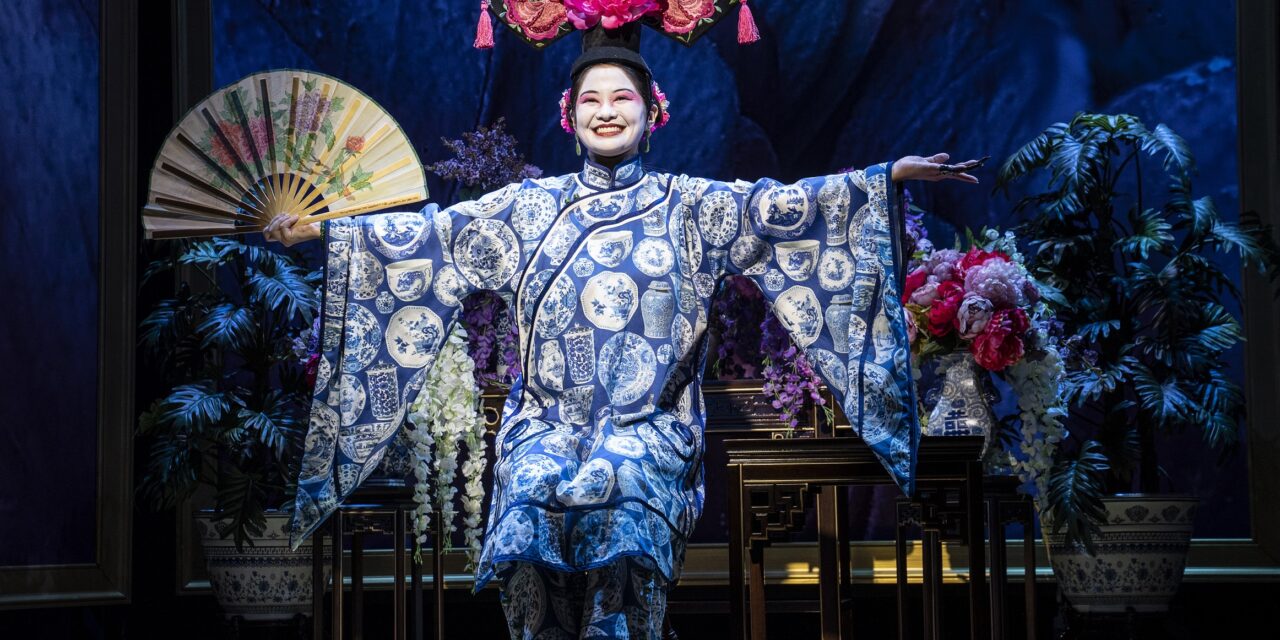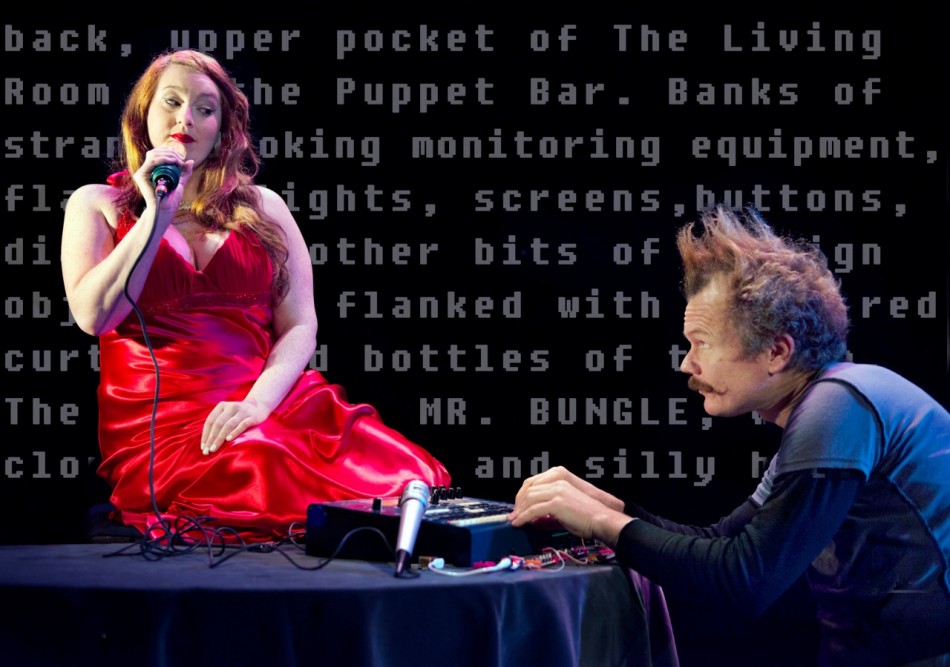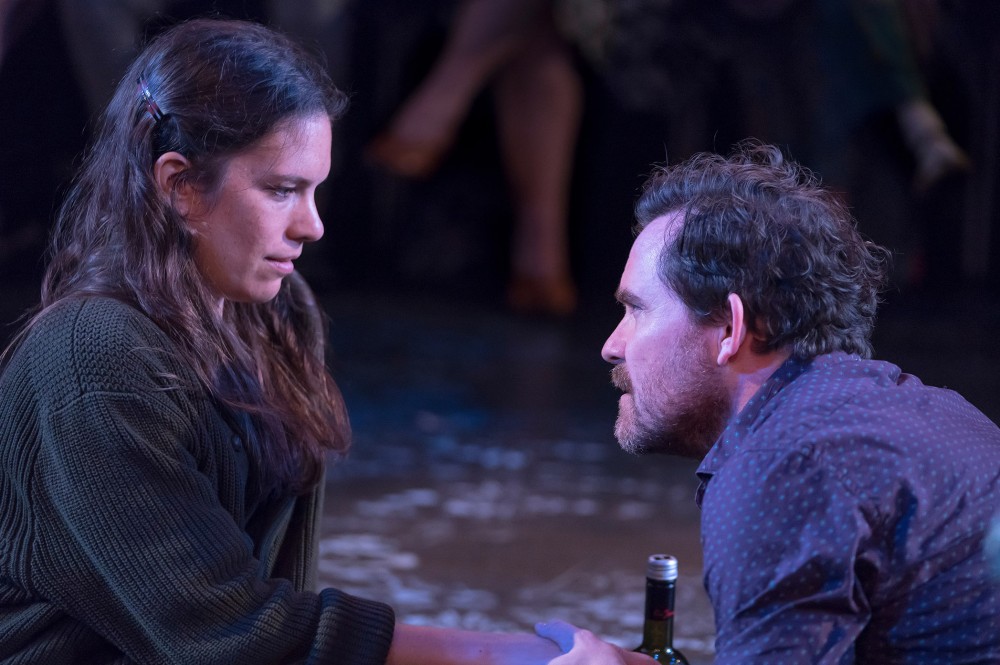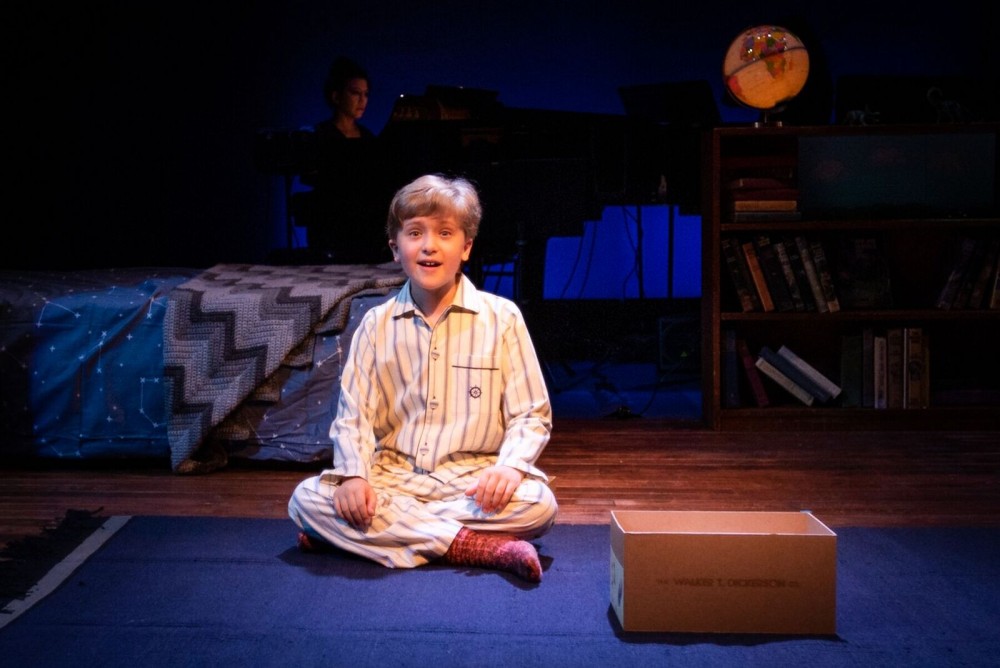By Carole Di Tosti . . .
Based on a true story The Chinese Lady currently at the Public Theater is being presented by the Barrington Stage Company and Ma-Yi Theater Company until 10 April. Finely directed by Ralph B. Peña, the production is cleverly wrought. Beautifully and symbolically staged in one room, The Chinese Lady builds to the final revelation which is both heartbreaking and hopeful.
Thematically uplifting the importance of understanding the human family in all of its incredible diversity, playwright Lloyd Suh pulls the young Chinese woman Afong Moy out of 1834 U.S. history. As a representative, Afong Moy was the first Chinese woman brought to New York City to be put on display for entertainment and informational purposes. Thus, at that time, until Afong Moy stopped being displayed by her “handlers,” interested Americans became acquainted with a “real live Chinese woman.” The exhibition of Afong Moy, who eventually went on tour throughout the U.S. briefly redefined American stereotypes of Asian women.
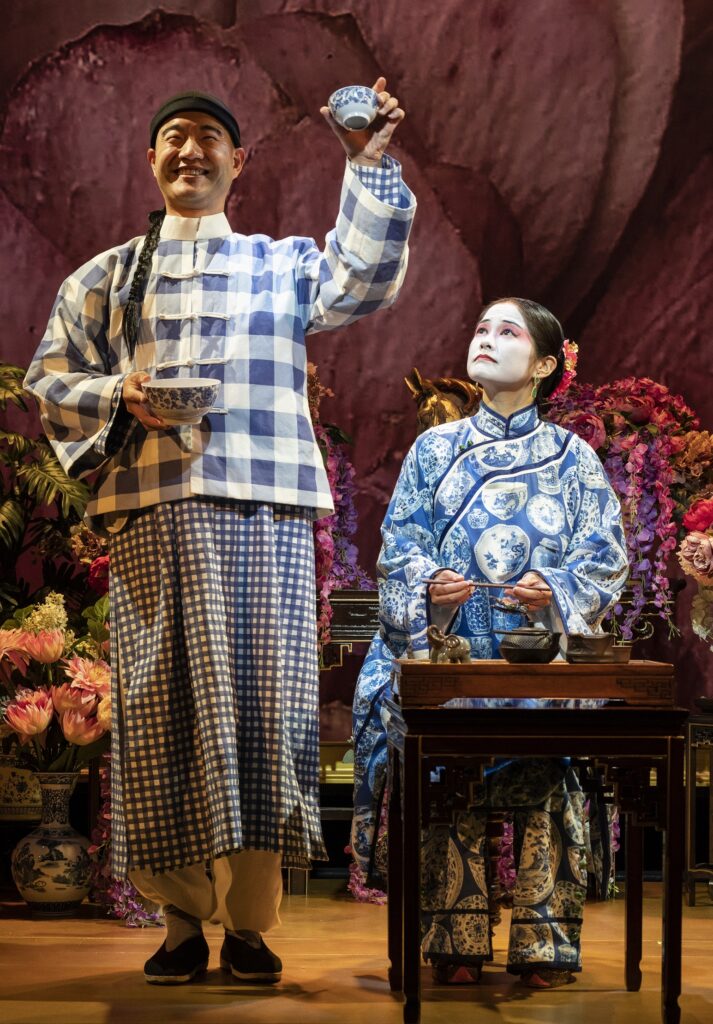
Afong Moy (Cindy Im and Shannon Tyo alternate in the role), introduces herself as a teenager serving at the pleasure of the Carnes brothers, who are traders of Far East Oriental Imports in New York City. With pride, Afong Moy discusses how her father contracted with the Carnes brothers for her, so that she would be put on display at an admission fee of $.25 which rises to $.50 as her exhibition gains popularity, and the Carnes brothers tour their “Chinese Lady” to East Coast cities.
As translator, Atung (Daniel K. Isaac and Jon Norman Schneider alternate in the role), interprets for her though she rarely speaks the first year of her contract. Afong deems him an “irrelevance” as she introduces him. He congenially and humbly agrees he is an “invisible,” with no true power of his own except to feature the star of the show, “the Chinese Lady.” And as he presents the star, he manages each cultural act she performs that astounds Americans.
For example, Atung presents how the Chinese Lady eats rice, shrimp and vegetables with chopsticks and how she drinks tea (described as an important ritual in China). And as the piece de resistance that the Carnes brothers extensively advertised, she slowly, delicately walks on her four-inch-long bound feet. Atung discusses and illustrates the painful foot binding procedure which fascinates and repels audiences.
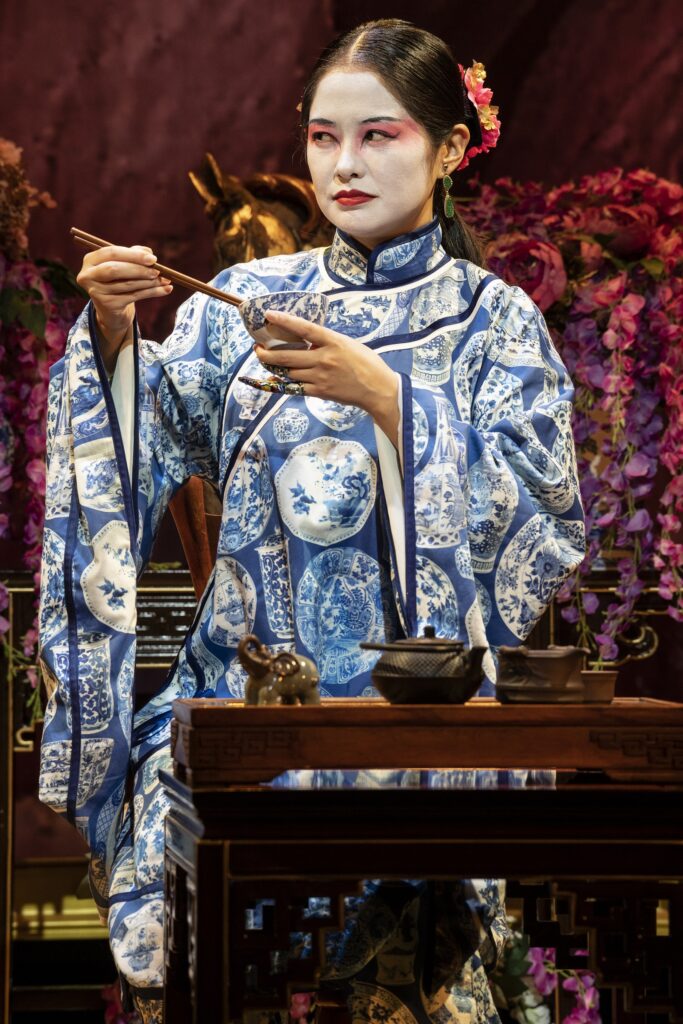

Interestingly, Afong Moy is optimistic about being in America. One of a large family and a girl (traditionally not prized), she has no hint of outrage that she was “sold” to the Carnes brothers and displaced from her parents and siblings. Cheerfully, she believes she will see them after two years when her father’s contract with the Carnes brothers ends. That her father made money off her and the Carnes brothers make money off exhibiting her, pleases Afong Moy. She is unaware that the conditions of her servitude are akin to slavery and paternalistic exploitation.
Eventually, her attitude changes as she ages, though she never grows embittered. Suh skirts polemic and argument, allowing the audience to pull together the themes. As a result, we note the powerful irony of her position and the American response to “the exotic” and “foreign” as objects to be peered at but not necessarily understood.
The irony of her condition and position daily in one room that is supposed to reveal China but doesn’t is tragic as is her pride and Atung’s admitted “irrelevance.” Suh indicates that she is imprisoned in a cage which only reveals what is a convenient perspective of China and the superficiality of the “Chinese experience.” What she does is not even a simulation or even a representation of her home country.
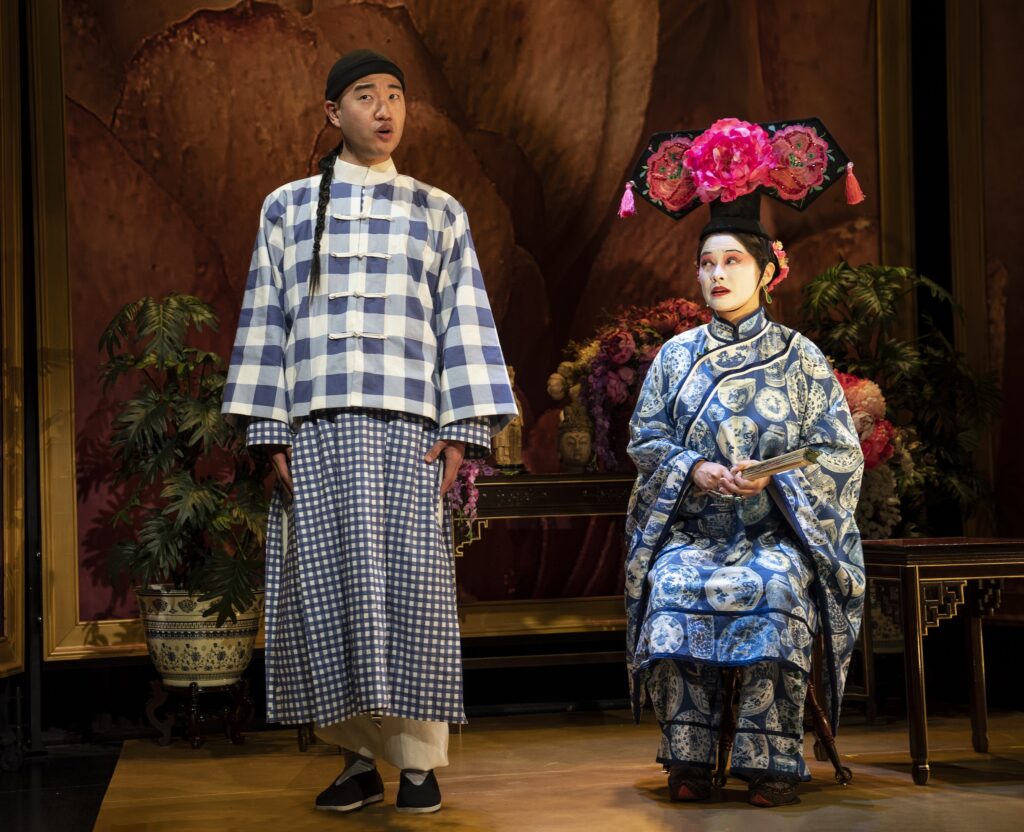

Indeed, it is a cheap money-making trick which she ironically admits to later in the play. This “trick” has kept her perspectives and truth in a box. We note the currency of her wisdom that relates to attitudes toward viewing Asians in a box that are similar today and have visited violence upon Asians and Asian-Americans in the last few years.
On a tour of the U.S. on which she meets President Andrew Jackson, Atung plays himself and the President, and Afong Moy plays herself to illustrate what happened during the visit. The dialogue is humorous yet ironic. Atung doesn’t specifically translate Afong Moy’s questions and comments to President Jackson. Thus, her voice is muted by Atung, who is far from “an irrelevance” as he refuses to reveal the import of Afong Moy’s perspectives.
Sadly, as Afong Moy attempts to use her position to strengthen and deepen understanding between the President, China and Chinese customs, Atung keeps Afong Moy looking like a superficial, simpleton. At a historic time of the Opium Wars when understanding above all is vital between countries, Afong Moy’s hope to go deeper with the President is eradicated by Atung.
Suh once again undergirds the tragedy of not bridging effective communication between immigrants from different nations. Indeed, years later, Afong Moy considers that seeking understanding would have helped mitigate resentments about Chinese immigration.
Though she believes she will leave the U.S. and return to China, it never happens. She remains in the box or room that she has been placed in on display. This is a symbolic metaphor. When she turns twenty-nine years old, Afong Moy has gained understanding, perspective and wisdom. It is then that a turning point in the play occurs. Time speeds up and as a representative, she chronicles the abuse and violence against Chinese immigrants through the decades that are end-stopped in the Chinese Exclusion Act. Through it all, AFong Moy remains in the room, an exclusion zone or box that the culture places all Chinese in until enlightenment comes to listen and understand their point of view.
In the exquisite The Chinese Lady, Suh and Peña use Afong Moy’s perceptions to disclose who we are and who we should be as a nation of immigrants. Kudos to all the creatives who brought this production to its wonderful manifestation as a must-see. Run time 90 minutes, thru April 10. For tickets and times go to https://publictheater.org/
Photos: Joan Marcus


